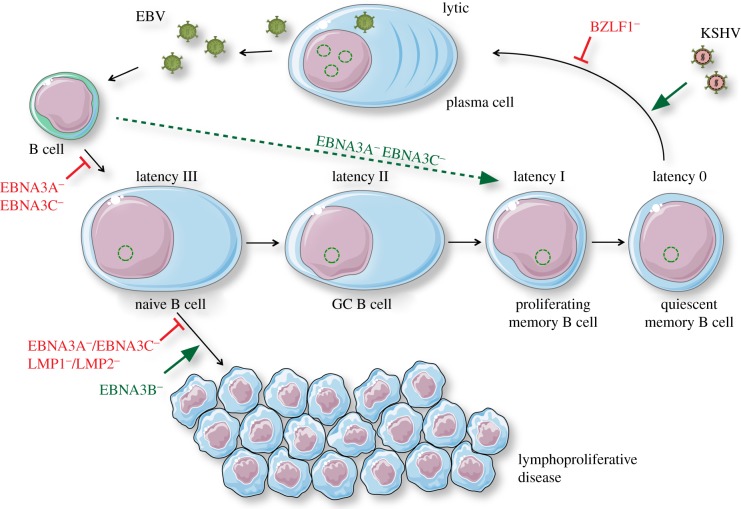Figure 1.
Requirements for persistence, lytic replication and lymphomagenesis as revealed by mutant EBV infection and KSHV co-infection of humanized mice. EBV infection of B cells establishes different latent EBV infection programmes (0, I, II and III) in B-cell differentiation stages of healthy EBV carriers and reactivates from the memory B-cell pool into lytic replication. Lymphoproliferations develop in humanized mice primarily from latency III infected B cells. EBV nuclear antigen 3A and 3C (EBNA3A and 3C), or latent membrane protein 1 and 2 (LMP1 and 2) deficient viruses are compromised in B-cell lymphoma establishment. EBNA3B-deficient EBV causes lymphomas at increased frequencies. EBNA3A and 3C-deficient viruses block transition into complete latency III but allow direct access to persistence in latency 0. BZLF1-deficient EBV cannot access lytic replication and KSHV co-infection increases lytic replication of wild-type EBV. Inhibitory interactions are indicated by blocked lines, e.g. BZLF1−, and activating interactions by large arrows, e.g. KSHV. This figure was created in part with modified Servier Medical Art templates, which are licensed under a Creative Commons Attribution 3.0 unported license: https://smart.servier.com. (Online version in colour.)

